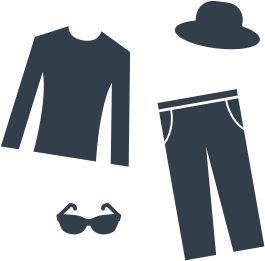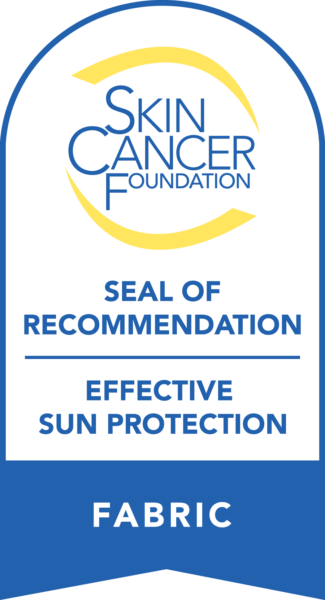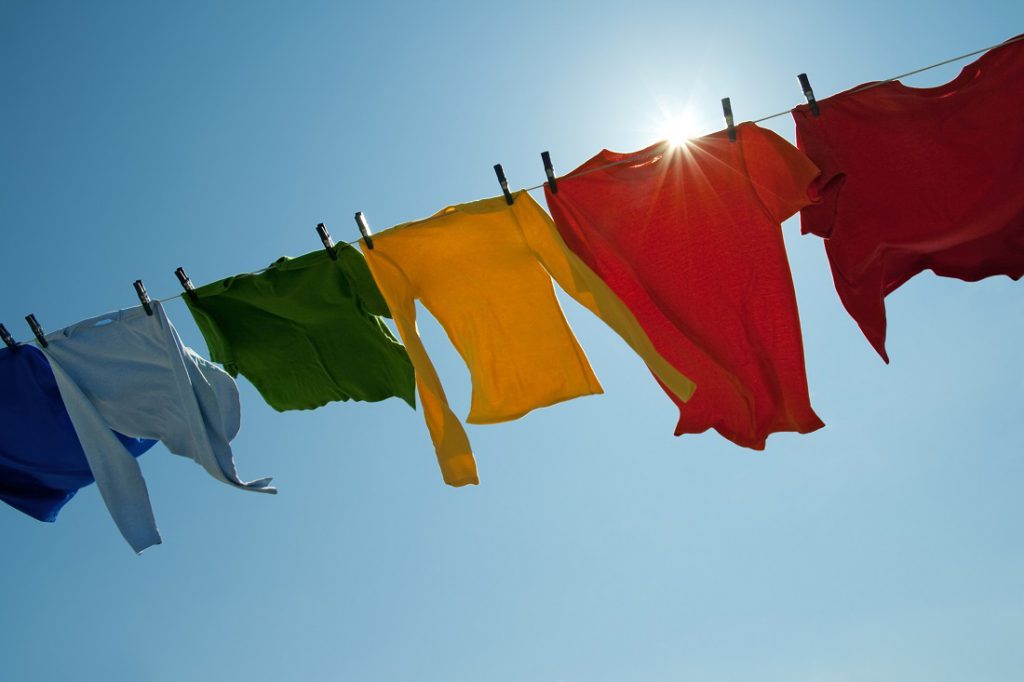Sun-Protective Clothing
A Safe, Simple Way to Keep the Rays at Bay
Your clothing doesn’t just look great. It also absorbs or blocks harmful UV radiation and remains one of the most effective forms of protection against sun damage and skin cancer.
What’s more, sun-protective clothing is the simplest way to stay safe; unlike sunscreen, you never need to reapply!
A Better Way:
CLOTHING
is the most effective form of sun protection.

UPF: What it is and why it matters
Ultraviolet Protection Factor (UPF) indicates how much UV radiation (both UVB and UVA) a fabric allows to reach your skin. For example, a UPF 50 fabric blocks 98 percent of the sun’s rays and allows two percent (1/50th) to penetrate, thus reducing your exposure risk significantly.

What you need to know: A fabric must have a UPF of 50 to qualify for The Skin Cancer Foundation’s Seal of Recommendation. A UPF of 30 to 49 offers very good protection, while UPF 50+ rates as excellent.
How does UPF differ from SPF?
UPF measures the amount of UV radiation that can penetrate fabric and reach your skin. Sun Protection Factor, or SPF, is based on the time it takes for UV-exposed skin to redden; if you burn after 20 minutes, if used correctly, an SPF 15 sunscreen may protect your skin 15 times longer.
Another important distinction: UPF measures both UVB and UVA rays, while SPF measures only UVB.
What makes clothing sun safe?
Yes, your clothing shields you from the sun, but not all fabrics and colors provide equal protection. Luckily, you have plenty of options. When shopping for apparel that can effectively shield you from harmful rays, keep these factors in mind:
Color: Dark or bright colors keep UV rays from reaching your skin by absorbing them rather than allowing them to penetrate. That’s why these colors offer better protection than lighter shades.
Construction: Densely woven cloth — like denim, canvas, wool or synthetic fiber — is more protective than sheer, thin or loosely woven cloth. Today you can also find high-tech, lightweight, breathable fabrics designed for UPF performance that offer excellent sun protection.
Content: The composition of your fabric really matters. Unbleached cotton contains natural lignins that act as UV absorbers. Shiny polyesters and even lightweight satiny silks can be highly protective because they reflect radiation. High-tech fabrics treated with chemical UV absorbers or dyes prevent some penetration from UV rays.
Fit: Loose-fitting apparel is preferable. Tight clothing can stretch and reduce the level of protection offered, as the fibers pull away from each other and allow more UV light to pass through.
UPF: Some clothing makers provide UPF labels, which indicate exactly how much of the sun’s rays the garment can shield. Look for our Seal of Recommendation whenever you shop.
Coverage: The more skin your outfit covers, the better your protection. Whenever possible, choose long-sleeved shirts and long pants or skirts.
Activity: Regardless of UPF, if your clothing gets stretched or wet, it will lose some of its protective ability and become more transparent, exposing your skin to more UV light.
Not all clothing protects equally
A white T-shirt provides only moderate sun protection, with a UPF of about 7. When that T-shirt gets wet, it provides a UPF of only 3!
A dark, long-sleeved denim shirt can provide a UPF of about 1,700; in essence, complete sun protection.

 Start at the top – wear a hat
Start at the top – wear a hat
Safeguard against wrinkles and skin cancer and look cool at the beach by wearing a great hat whenever you’re outside. Hats are a perfect complement to UV-filtering sunglasses and broad-spectrum sunscreen to protect your face and eyes.
Here’s what to look for in a sun-safe hat:
Wide Brim
The best hats for sun protection have a brim of at least three inches to shade the face, scalp, neck, shoulders and upper back, along with easily overlooked places like the tops of the ears and back of the neck.
Tight Knit
Look for a tightly woven hat rather than a loosely constructed straw hat that lets in the UV rays.
Why hats are a must
Basal cell and squamous cell carcinomas account for about 90 percent of all skin cancers, and often appear on the head and neck. Hats help safeguard your face, scalp and neck.
Live a sun-safe life
You can enjoy yourself in the sun without compromising your health or style by wearing sun-safe clothing and hats as part of a complete sun protection strategy.
To help you choose your sun-safe products, look for The Skin Cancer Foundation’s Seal of Recommendation and check our Product Finder.
For more prevention tips, see Your Daily Sun Protection Guide.
Reviewed by:
Elisabeth G. Richard, MD






